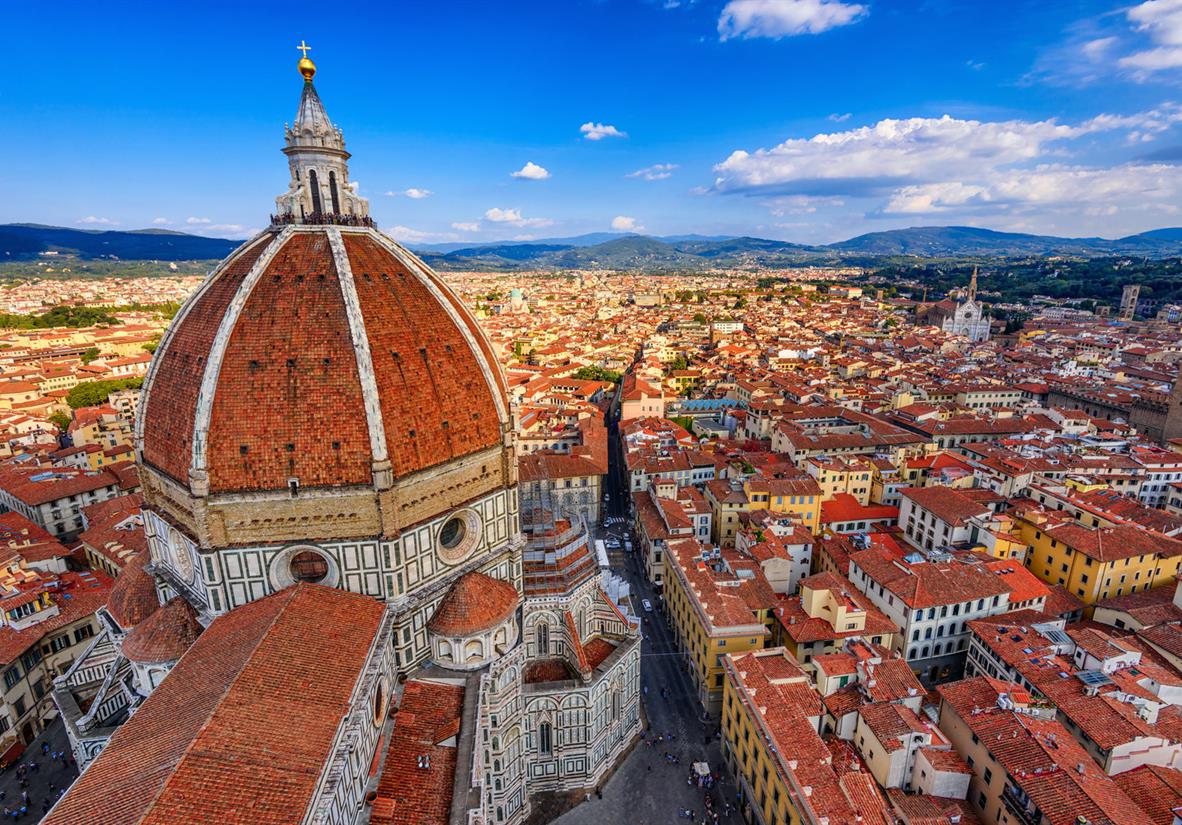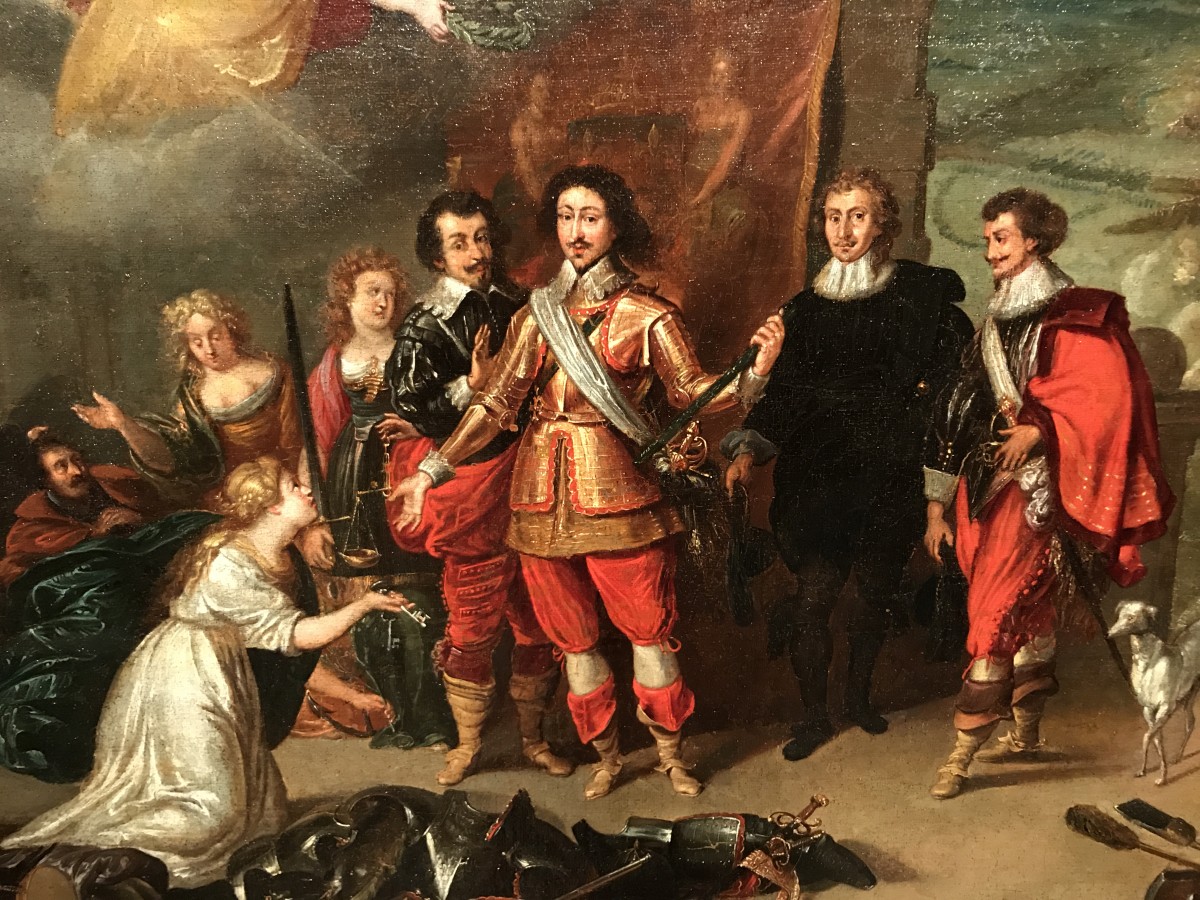
The interior of the magnificent Siena Cathedral!
It was completed in 1264.
But if you look closely you might notice something unusual...
Didn't notice? Ok, I will reveal...
It was completed in 1264.
But if you look closely you might notice something unusual...
Didn't notice? Ok, I will reveal...

Inside the cathedral are two giant 60 foot tall flagpoles!
These were captured from the Florentines at the Battle of Montaperti in 1260 where the Sienese defeated a much larger Florentine army.
The capture of enemy battle flags was the turning point of the battle!

These were captured from the Florentines at the Battle of Montaperti in 1260 where the Sienese defeated a much larger Florentine army.
The capture of enemy battle flags was the turning point of the battle!


These flagpoles were part of the Florentine "carroccio", a large wagon used by Italian city states as a rallying point during battles.
Losing the carrocio to the enemy was considered the worst humiliation.
The Sienese still flaunt this war trophy in their cathedral to this day!

Losing the carrocio to the enemy was considered the worst humiliation.
The Sienese still flaunt this war trophy in their cathedral to this day!


The battle of Montaperti happened at the height of tensions between the Guelphs and Ghibellines, two rival factions in Italy who supported the Pope and the Holy Roman Emperor respectively.
Florence was controlled by Guelphs while Sienna was controlled by the Ghibellines.



Florence was controlled by Guelphs while Sienna was controlled by the Ghibellines.




The Florentines showed up with a huge army of 35000 men as they were joined by Guelph troops from Genoa, Piacenza, Bologna, Lucca, Pistoia, Prato, Arezzo, Volterra, San Gimignano and the papal towns of Perugia and Orvieto. They were led by mayor Jacopino Rangoni. 

Meanwhile the Sienese mobilized only around 20000 men including troops from pro-Ghibelline Pisa and Crotone and elite German mercenary knights sent by Manfred of Sicily from the Imperial Hohenstaufen dynasty. 

The two armies met at Montaperti. Both arrived with their carroccio wagons where priests celebrated Mass at the altar before the battle in the shadow of illustrious battle flags.
Both carroccios were guarded by the most elite troops.


Both carroccios were guarded by the most elite troops.



The Guelphs had all the advantages. They had the larger army and a better position on the battlefield as they were on top of a hill.
But despite this, the Sienese Ghibellines attacked with both infantry and cavalry!
But despite this, the Sienese Ghibellines attacked with both infantry and cavalry!

The elite German knights charge with the cries of Saint George!
The battle of Montaperti began.
These powerful knights were successful and pushed back the Guelph cavalry.
The battle of Montaperti began.
These powerful knights were successful and pushed back the Guelph cavalry.

But in the clash of both infantries that followed, the superior numbers of the Florentines were starting to overwhelm the Sienese Ghibellines.
The battle was fierce and bloody.
It looked like the Guelphs would win...
The battle was fierce and bloody.
It looked like the Guelphs would win...

But the Sienese Ghibellines fought bravely!
The held on despite the weaker numbers.
They were willing to fight the hated Guelphs until the end!
The held on despite the weaker numbers.
They were willing to fight the hated Guelphs until the end!

And then... A BETRAYAL that changed everything!
In the Ghibelline army there were also Florentine exiles who managed to convince their relatives fighting for the Geulphs to switch sides and join the Sienese cause!
In the Ghibelline army there were also Florentine exiles who managed to convince their relatives fighting for the Geulphs to switch sides and join the Sienese cause!

One of these Florentines who switched sides was Bocca degli Abati.
He charged at the standard bearer of the Florentine cavalry, Jacopo dei Pazzi. Bocca cut of Jacopo's hand with which he held the Florentine war banner!
This demoralized the Florentine Guelph army!
He charged at the standard bearer of the Florentine cavalry, Jacopo dei Pazzi. Bocca cut of Jacopo's hand with which he held the Florentine war banner!
This demoralized the Florentine Guelph army!

The Ghibellines used the momentum to charge at the Florentine carroccio however the elite infantrymen guarding it held firm.
But the chaos caused by the sudden betrayal put the Guelph army in disarray.
The tide of the battle was turning...
But the chaos caused by the sudden betrayal put the Guelph army in disarray.
The tide of the battle was turning...

The elite Ghibelline knights rallied for one final charge.
This time the charge was devastating and broke the Guelph army, routing them!
The Ghibellines captured many prisoners and raided the enemy camp.
This time the charge was devastating and broke the Guelph army, routing them!
The Ghibellines captured many prisoners and raided the enemy camp.

The Chronicles report that among the captured were "some of the best people in Florence, men from every house."
"Thus the arrogance of the ungrateful and proud Florentine people was brought low."
"Thus the arrogance of the ungrateful and proud Florentine people was brought low."

But the biggest prize of them all in terms of prestige was the capture of Florentine carrocio.
And this is how the flagpoles that were part of the carrocio ended up in the Siena Cathedral which was completed 4 years after the battle.
And this is how the flagpoles that were part of the carrocio ended up in the Siena Cathedral which was completed 4 years after the battle.

While Siena rejoiced, Florence mourned.
When news of defeat reached Florentines "there arose among men and women a wail of lament so powerful that it reached up to heaven, for there was no house in Florence, small or great, from which someone had not been killed or captured."
When news of defeat reached Florentines "there arose among men and women a wail of lament so powerful that it reached up to heaven, for there was no house in Florence, small or great, from which someone had not been killed or captured."

• • •
Missing some Tweet in this thread? You can try to
force a refresh































